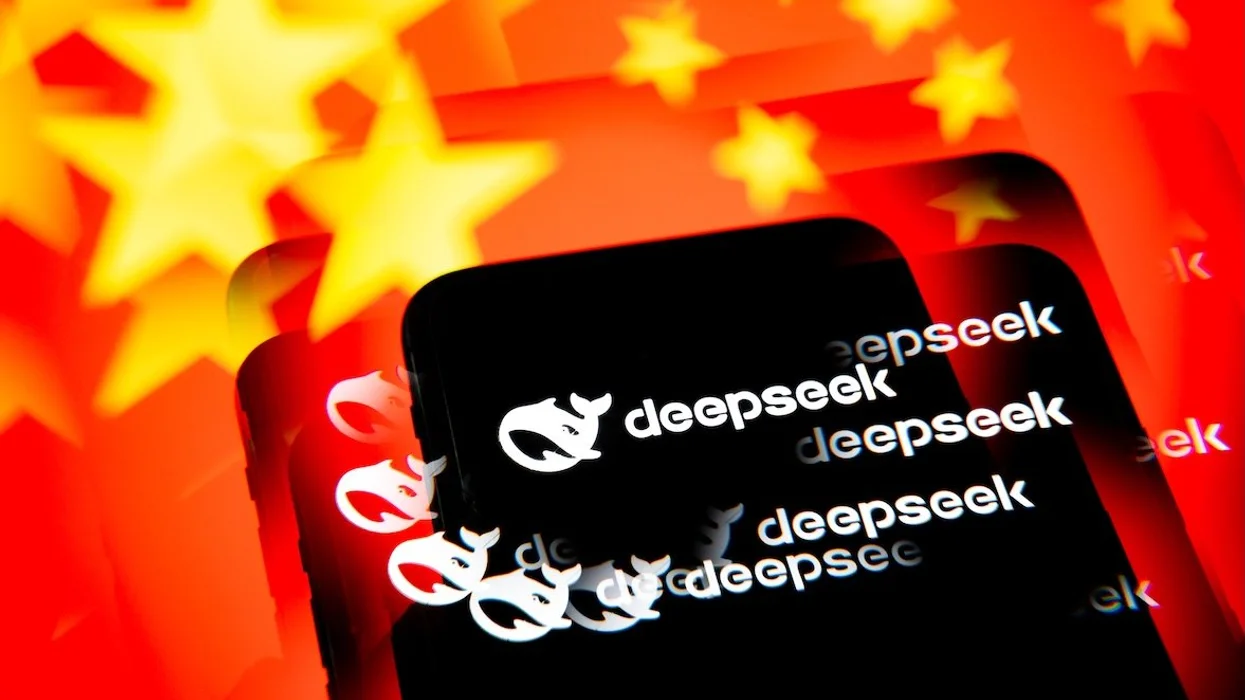The Waterworth project, announced by Meta, the parent company of Facebook, Instagram, and WhatsApp, is one of the most ambitious initiatives in recent history in the realm of global digital infrastructure. This gigantic network of underwater fiber optic cables from the Waterworth project promises to interconnect over 50,000 kilometers of oceans and connect continents such as North America, South America, Africa, Asia, and Oceania.
With this ambitious multimillion-dollar investment in the Waterworth project, Meta aims not only to improve connectivity between these continents but also to strengthen its dominance in the growing artificial intelligence (AI) market and other cutting-edge digital services. The Waterworth project reflects the strategic importance that underwater cables hold in the economy and geopolitics of the 21st century.
As the demand for data and online services grows to unprecedented levels, the infrastructure that enables the transmission of information over long distances has become an essential resource, both for tech companies and nations fighting for access to global digital highways.
In this context, the role of Meta and its Waterworth project is not only a technological advance but also a high-level geopolitical maneuver that could have long-term repercussions. Below, ITD Consulting provides all the details about the Waterworth project.

The Waterworth Project: Ambition, Innovation, and Technical Challenges
The Waterworth project seeks to create a submarine cable network more extensive than any similar infrastructure currently existing in the world. With 50,000 kilometers of fiber optic cables, the Waterworth project's cable will be the longest in history, even surpassing the Earth's circumference, which is approximately 40,000 kilometers.
This Waterworth network will be built using 24-pair fiber cables, making it one of the most technologically advanced submarine cables. Current cables typically have between 8 and 16 pairs, so the Waterworth project represents a significant expansion in capacity and speed.
This advancement in the Waterworth project is crucial for addressing the growing demand for digital services globally. The expansion of video streaming, video calls, e-commerce, and artificial intelligence applications are just some of the factors driving the need for greater bandwidth.
Meta, which is already deeply involved in AI development, sees this Waterworth project as an opportunity to consolidate its digital infrastructure and ensure its leadership in the artificial intelligence market, which will rely on large volumes of data to function efficiently.
The process of constructing the Waterworth project’s cable is not simple. The Waterworth submarine cables must be installed at the bottom of the ocean, requiring the use of specialized ships to safely place the cables.
The cable routes for the Waterworth project will be carefully planned to avoid high-risk areas, such as those near geological faults or areas with high maritime activity, such as shipping routes for cargo ships. Additionally, the Waterworth cables must be protected from natural hazards like underwater earthquakes, tsunamis, and marine wildlife that could damage the infrastructure.
To protect the cables and ensure their longevity, Meta will employ advanced burial techniques in shallow areas near the coast, where human activities such as ship anchoring could pose a risk. However, one of the biggest challenges of the Waterworth project will be installing the cable at depths of up to 7,000 meters, in areas where working conditions are extremely complex and maintenance and repair costs are high. To overcome these obstacles, technological innovations and specialized equipment will be required.
The Geopolitical Impact of the Waterworth Project: A New Global Power Play
Meta’s Waterworth project is not only an infrastructure project, but it also has a significant geopolitical impact. The submarine cables of the Waterworth project, which carry over 95% of global data traffic, are essential to the modern digital economy. These cables provide fast and efficient connectivity between continents, facilitating international trade, scientific cooperation, distance education, and other vital services.
In this regard, control over these data infrastructures in the Waterworth project offers a significant strategic advantage. The creation of a network of submarine cables in the Waterworth project that connects key continents such as America, Africa, Asia, and Oceania strengthens Meta’s power by providing it with exclusive infrastructure for data transit.
Control over this infrastructure in the Waterworth project allows Meta to manage digital traffic between its data centers more efficiently, which is crucial for developing and improving its services, particularly in areas like data analysis, artificial intelligence, and cloud processing. As the world becomes increasingly dependent on digital services, tech companies controlling these "digital highways" become key players on the global stage.
Meta, along with other major tech corporations like Google, Amazon, and Microsoft, is competing to dominate the infrastructure that enables data transmission between countries and continents. This creates a power dynamic that transcends national borders, as tech companies now have the power to influence global politics and regulations on data flow and cybersecurity.
The interconnection of continents through projects like the Waterworth project also has political implications. Countries that have access to high-capacity submarine cables, like those of the Waterworth project, may see their competitiveness in global trade, scientific research, and technological innovation increase. In contrast, those without this infrastructure may fall behind, limiting their ability to participate in the global digital economy.
A clear example of this geopolitical impact is India. The country has experienced significant growth in its digital infrastructure in recent years and is becoming one of the largest markets for cloud services and artificial intelligence-based applications.
With the arrival of the Waterworth project, India will be able to better leverage its digital potential by improving its connection speed with other global markets. This will help strengthen India's digital economy, which in turn will have a positive impact on its competitiveness in the global market.
Additionally, the Waterworth project could influence international relations. Submarine cables cross international waters and therefore require agreements between countries to ensure their security and maintenance. These agreements for the Waterworth project can be complicated and subject to political negotiations, as each country has interests in the communication systems and data traffic passing through its jurisdiction.

Benefits for Emerging Economies: A Globalized Digital Connection
The Waterworth project not only benefits the tech giants and Meta but also promises to bring significant advantages to emerging economies that will be connected through this global network of submarine cables. Countries in Latin America, Africa, and Asia, which have traditionally had less developed telecommunications infrastructure, will be able to leverage the new connectivity to accelerate their digital development.
For example, in South Africa, one of the main access points to the African continent, the Waterworth project will improve digital connectivity between Africa and the rest of the world. This could have a significant impact on key sectors such as education, healthcare, and e-commerce.
The increased connectivity with the Waterworth project will allow South African companies to access international markets more efficiently, boosting economic growth and generating employment in the region. In Brazil, the improvement of digital infrastructure will also have a positive impact on education and research.
Brazilian students and professionals will have faster access to online resources, improving the quality of education and collaboration with researchers around the world. Similarly, Brazilian companies will be able to take advantage of new digital markets and expand beyond their borders.
In Australia, the Waterworth project will strengthen its digital infrastructure, benefiting businesses and academic institutions that rely on fast and reliable connectivity to conduct scientific research and develop new products and services. International collaboration will be smoother, positioning Australia favorably within the global digital economy.
Challenges of the Waterworth Project: Technical, Economic, and Political Challenges
While the Waterworth project represents a massive investment in infrastructure and promises significant benefits, it also faces considerable challenges and risks. The large-scale installation of submarine cables for the Waterworth project is not without its difficulties.
One of the biggest challenges is the security of the Waterworth cable. Meta’s Waterworth cable will have to cross deep oceans and geologically unstable areas, which increases the risk of damage due to underwater earthquakes, tsunamis, or submarine landslides.
The cables for the Waterworth project are also vulnerable to damage caused by human activities. Ship anchors, fishing nets, and other activities can damage the cables and affect connectivity. To mitigate these risks, Meta has designed carefully planned routes and will employ advanced protection and burial techniques to ensure the integrity of the cables.
From an economic standpoint, the investment in the Waterworth project is multi-billion-dollar. It is estimated that the total cost of the Waterworth project could exceed $10 billion, representing a significant financial commitment for Meta. Such investments are also subject to economic uncertainties, such as fluctuations in the cost of materials, labor, and the risks associated with installing such complex infrastructure.
The Future of the Waterworth Project and Global Connectivity
Looking ahead, Meta's Waterworth project has significant potential to reshape the global connectivity landscape. As technology evolves and the demand for digital services grows exponentially, the infrastructure created by the Waterworth project will be crucial to ensuring the world remains efficiently interconnected.
This is particularly important in a world that is increasingly reliant on the transmission of large volumes of data, which is used for applications such as video streaming, artificial intelligence, and cloud services.
Moreover, the expansion of this Waterworth submarine network could trigger a series of additional innovations in other areas, such as enhancing 5G connections, expanding internet coverage in remote regions, and promoting collaborative scientific research initiatives. As data networks become faster and more reliable, the possibilities for developing new technologies and services will be nearly limitless.
In the long term, connection through submarine cables like those proposed in the Waterworth project will be key to equitable access to technology, which could level the playing field between developed and emerging nations. If managed properly, this Waterworth infrastructure could facilitate access to high-quality internet in places where connectivity was previously limited, having a positive impact on education, the economy, and innovation.
In geopolitical terms, the Waterworth project could lead to new power dynamics among nations, with greater emphasis on international cooperation regarding digital infrastructure. Countries will need to establish appropriate regulatory and cybersecurity frameworks to ensure that data traffic across these new routes is conducted securely and without undue restrictions.

Meta's Waterworth Project marks the beginning of a new era in global digital connectivity. As the world becomes more dependent on online services and artificial intelligence, submarine cable infrastructure will be essential to ensure fast and reliable communication between continents. The Waterworth project will not only transform the way people and businesses connect, but it will also have far-reaching geopolitical implications.
With this investment, Meta strengthens its position as one of the most powerful players in the global technology and telecommunications market, while emerging economies will also benefit from improved connectivity. However, the technical, economic, and political challenges of the project are significant and must be overcome to ensure its long-term success.
In summary, the Waterworth project is a clear example of how technology and geopolitics are intertwined in the modern world. The dominance of digital infrastructures and the ability to connect continents through submarine cables not only provides access to information but also grants economic and political power.
If you want to learn more about the Waterworth project and the upcoming innovations in connectivity, contact us at [email protected]. We have a dedicated team focused on technological advancements to help you join cutting-edge innovations.





